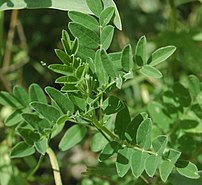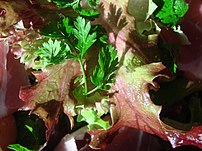[amazon_link asins=’B003PGCUKO,B001G7QELU’ template=’ProductCarousel’ store=’finmeacur-20′ marketplace=’US’ link_id=’6f239dfd-f8ab-11e6-a4b8-7bffb800e50b’]
[amazon_link asins=’B01GEMYUOE,B00WDEAZTW’ template=’ProductCarousel’ store=’finmeacur-20′ marketplace=’US’ link_id=’e3793908-0b24-11e7-a971-2b22e780ddfc’]
The most popular herbal remedies in the health food industry are those which promote bowel movement.Because we all know that if the bowel movement is regular and perfect, we get rid of many illness. The reason is quite simple since the most common problem of so many individuals is constipation and bowel irregularity. Consider how tremendously valuable a formula is that not only regulates bowel movement but at the same time does the following:.
CLICK & SEE THE PICTURE
Amla , Bihara and Harada, the dust of three in middle
- improves digestion,
- reduces serum cholesterol,
- improves circulation (potentiates adrenergic function),
- contains 31% linoleic acid,
- exerts a marked cardio-protective effect,
- reduces high blood pressure,
- improves liver function,
- has proven anti-inflammatory and anti-viral properties,
- expectorant, hypotensive.
Sound like a panacea? Well, it is practically just that.
Triphala, as it is called, is the most popular Ayurvedic herbal formula of India, since it is an effective laxative which also supports the body’s strength. The constitution of vegetarian Hindus cannot tolerate harsh laxatives anymore than vegetarians in other countries. Because of its high nutritional value, Triphala uniquely cleanses and detoxifies at the deepest organic levels without depleting the body’s reserves. This makes it one of the most valuable herbal preparations in the world.
A popular folk saying in India is, “No mother? do not worry so long as you have Triphala.” The reason is that Indian people believe that triphala is able to care for the internal organs of the body as a mother cares for her children. Each of the three herbal fruits of tTriphala takes care of the body by gently promoting internal cleansing of all conditions of stagnation and excess while at the same time it improves digestion and assimilation.
Triphala combines both nutritional as well as blood and liver cleansing actions. It has little function as a demulcent or lubricating laxative, however. It possesses some anthroquinones which help stimulate bile flow and peristalsis. The nutritional aspect is more in the form of its high vitamin C content, the presence of linoleic oil and other important nutrients which it makes more of a tonic.
People who are in need of purgatives are those whose bowel irregularity is caused by liver and gall bladder congestion usually accompanied by some degree of blood toxins. Those in need of demulcent laxatives are those with intestinal dryness caused by a variety of metabolic factors including a nutritional deficiency as well as a condition of excess hypermetabolic energy. Triphala will prove useful for all kinds of constipation except that caused by a lack of vital energy or chi. Even for the latter type, it will not further deplete such an individual and can be made to work well if it is combined with other chi, blood or yang-warming tonic herbs such as ginseng for chi tonification, tang kuei for blood tonification and prepared aconite for yang tonification.
Herbal healing is largely a matter of strategy. One approach may emphasize tonification while another emphasizes elimination. The problem with overemphasizing tonification is that it can lead to further stagnation and congestion in an excess condition. Emphasizing elimination through the overuse of purgatives in an already deficient individual can further deplete the body’s store of minerals and essential B vitamins as well as imbalance beneficial intestinal micro-organisms. The result is weakness with a likely tendency towards chronic fatigue and anemia. Since the body is always simultaneously involved with maintaining and gaining strength through good nutrition as well as eliminating waste, Triphala is unique in that it is naturally able to support both vital processes simultaneously.
Because of its high nutritional content, Ayurvedic doctors generally do not regard Triphala as a mere laxative. Some of the scientific research and practical experience of people using it down through the ages has demonstrated that Triphala is an effective blood purifier that stimulates bile secretion as it detoxifies the liver, helps digestion and assimilation, and significantly reduces serum cholesterol and lipid levels throughout body. As a result, it is regarded as a kind of universal panacea and is the most commonly prescribed herbal formula.
The three fruits of Triphala (Harada, Amla and Bihara) each correspond to the “three humours” or “tridosha” of Indian Ayurvedic medicine. According to Ayurvedic theory, the body is composed of three doshas or humours. Vata is sometimes translated as “wind” which corresponds to the mind and nervous system. Its nature is dry, cold, light and activating. The second is pitta which is also translated as “fire” or “bile.” It is responsible for all metabolic transformations including the digestion and assimilation of food as well as assimilation and clarity of thought and understanding. The nature of pitta is primarily hot, moist and light. Kapha is sometimes translated as the “water” or “mucus” humour and is responsible for all anabolic or building functions such as the development of muscle and bone tissue. Its nature is cool, moist and heavy.
Harada, having a bitter flavor, is associated with the vata humour as well as the air and space elements. It treats imbalances and diseases of the vata humour. Harada possesses laxative, astringent, lubricant, antiparasitical, alterative, antispasmodic and nervine properties. It is therefore used to treat acute and chronic constipation, nervousness, anxiety and feelings of physical heaviness.
Among Tibetans, Harada is so highly revered for its purifying attributes that it is the small fruit that is depicted in the hands of the “medicine Buddha” in their sacred paintings or tankas. Of the three fruits, Harada is the most laxative and contains anthroquinones similar to those found in rhubarb and cascara.
Amla has a sour flavor and corresponds to the pitta humour and the fire element in Ayurvedic medicine. It is a cooling tonic, astringent, mildly laxative, alterative, antipyretic. It is used to treat fire imbalances that include ulcers, inflammation of the stomach, intestines, constipation, diarrhea, liver congestion, eruptions, infections and burning feelings throughout the body. In various studies, Amla has been shown to have mild anti-bacterial properties, pronounced expectorant , anti-viral and cardiotonic activity.
Amla is the highest natural known source of vitamin C. Having 20 times the vitamin C content of an orange, Amla is also uniquely heat stable. Even when subjected to prolonged high heat, as in the making of the Ayurvedic tonic formula called Chyavanprash, Amla, as the primary herb comprising 50% of the formula, hardly loses any of the vitamin C that is present when it is freshly harvested off the tree. The same is true of Amla that has been dried and kept for up to a year. This age and heat stable form of vitamin C in Amla is due to the presence of certain tannins that bind and inhibit its dissipation.
Bihara is astringent, tonic, digestive and anti-spasmodic. Its primary flavor is astringent and the secondary is sweet, bitter and pungent. It targets imbalances associated with the kapha or mucus humour, corresponding to the earth and water elements in Ayurvedic medicine. Specifically Bihara purifies and balances excess mucus, treats asthma, bronchiole conditions, allergies and hiccoughs.
Ama is a term denoting a substance associated in Ayurveda with chronic disease patterns and symptoms of aging. It is described as a kind of sticky buildup of material that clogs the circulatory channels. In many ways it is nearly identical to the accumulation of excess cholesterol and blood lipids described in the West. Both conditions seem to contribute to a wide variety of circulatory disorders ranging from senility, rheumatic conditions, cancer and heart disease. It is interesting that in Traditional Chinese Medicine there is also a pathological condition associated with the heart called “invisible mucus” that is similar to the descriptions of both excess cholesterol and ama in Ayurveda.
One of the body’s reactions to coping with stress is to increase the production of corticosteroids. The accumulation of these stress hormones can also contribute to the formation of cholesterol. Internal stress and the resultant buildup of cholesterol can be caused by the abuse of stimulants, spicy, hot foods such as garlic and cayenne, excessive aerobic exercise and repression of the emotions. It is interesting that an excess of some of those very substances and activities that lower cholesterol in some, when not utilized in a holistic, balanced manner, can act as a stimulant and add further stress that would precipitate the further accumulation of cholesterol. Triphala is one of two Ayurvedic formulations that are specific for eliminating Ama and cholesterol from the body.
Triphala is a completely balanced energetic formula, being neither too cold, nor too hot. When taken regularly over a long period, it gently effects the elimination and purification of Ama from the tissues of the entire body. The three fruits have been scientifically studied and confirm some of its known traditional benefits. These include the lowering of cholesterol, reducing high blood pressure, benefiting circulation, improving digestion and regulating elimination without causing any laxative dependency.
One Indian study reported by C.P. Thakur, demonstrated the enormous value and effectiveness of Amla, reducing serum, aortic and hepatic cholesterol in rabbits. In another study, extracts of Amla fruit were found to decrease serum free fatty acids and increase cardiac glycogen. This helps to prevent heart attacks by providing significantly greater protection and nourishment to the heart muscle.
Studies of the fruit of Bihara found that it contains up to 35% oil and 40% protein. The oil is used in soap making and by the poorer classes as a substitute cooking oil for ghee. The sweet smelling oil is 35% palmitic, 24% oleic and 31% linoleic. Linoleic oil is an essential fatty acid important for increasing HDL cholesterol, associated with a healthy state and reducing LDL cholesterol, considered to indicate a higher-than-average risk for developing coronary-heart disease.
One of numerous studies of Harada demonstrated its anti-vata or anti-spasmodic properties by the reduction of abnormal blood pressure as well as intestinal spasms. This confirms its traditional usefulness for heart conditions, spastic colon and other intestinal disorders.
With all the virtues of the three individual herbs, Triphala has many wide and varied uses as a therapeutic herbal food. Before considering pathological indications for which Triphala would be appropriate, we should never ignore the value of taking it on some regular basis whether once daily or once or twice a week simply for health maintenance. Triphala, having great nutritional properties, will help to prevent sickness.(extracted from www.planetherbs.com)
Triphala combined with guggul is an Ayurvedic herbal formula most used to reduce fat from the body.It is not then an appetite suppressant in fact it is an Ayurvedic supplement that can mobilize and eleminate fat from the body and encourage permanent metabolic changes.Triphala purifies the body of old ama trapped in the fat and guggul (Commiphora mukul) actually scrapes fat away from the other tissues.
 Image via Wikipedia
Image via Wikipedia 




































